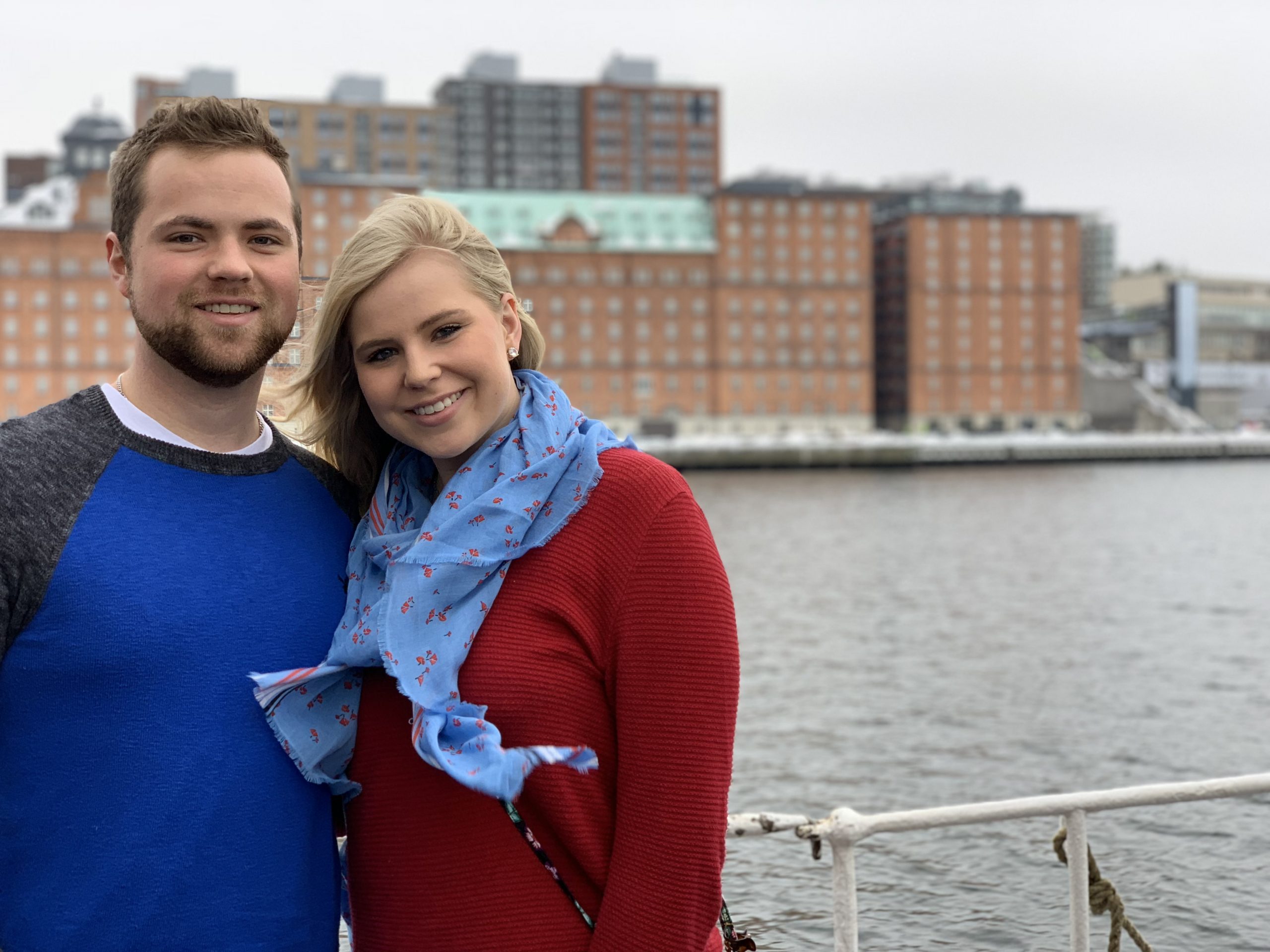—dispatch from Zach Croonquist ’19, religion and psychology majory
Guten Tag! It has been nonstop fun and adventure for the Gustavus choir on our tour of the music capitals of Europe. Our travels have taken us to Vienna, Bratislava, Prague, Leipzig, Dresden, Berlin, and Sweden. It has been so exciting to visit new places, interact with locals, try new foods, and, above all, sing in big, beautiful, historic churches.
I’m here to tell you that all of the above continued during our day-long stop in Wittenberg, Germany.
We visited on a cold, sleety day and despite being dressed in layers, many of us were shivering. The bus dropped us off next to Castle Church—the place where it is said that Martin Luther inaugurated the Protestant reformation more than 500 years ag o by posting 95 theses on the church door. After a restroom break, we split up into tour groups and walked through the city center. It was surreal to walk around the town of Wittenberg as it is a momentous, historical place that holds great significance for life as we Gusties know it today.
o by posting 95 theses on the church door. After a restroom break, we split up into tour groups and walked through the city center. It was surreal to walk around the town of Wittenberg as it is a momentous, historical place that holds great significance for life as we Gusties know it today.
Our tour guides recalled the story about Luther’s harsh dissent with the Catholic Church and their selling of indulgences, and how he sought to reform the church and move it away from these practices. In addition to the theological and ecclesiological reforms Luther sought, our tour guides also talked about some of the broader societal changes for which he advocated. It was very important for Luther that everyone have access to education and be able to read and write—boys and girls alike! Additionally, Luther strongly believed that we all have vocations, or unique callings in life, that correspond to our gifts, passions, and values. These two ideals are hallmarks of the longstanding tradition of Lutheran higher education.
After our tour, the choir was bussed over to lunch at a local restaurant that had a big event room in back. There was a long buffet line to the right filled with meats, potatoes, soups, and desserts. The warm, savory food gave off a delectable aroma. After a couple of hours of eating, conversation, and the beloved tradition of choir “clap-ups,” we brought the chefs up front and sang them the G-Choir Swedish thank you song. It was a lovely time! We then headed back to the city center for a rehearsal at Castle Church before our performance.
We had already sang in some incredible places but Castle Church was particularly beautiful. The neo-gothic style architecture was breathtaking and the ornate details were endless. Everywhere you looked there were vibrant stained glass windows, regal looking statues, grandiose light fixtures, and elaborate wood-carved features. The space was truly divine. That evening the choir performed as part of an evensong service so we only did about half our pieces but nonetheless singing in Castle Church was miraculous. Our sound reverberated throughout the space as we lifted our voices in sacred song. The joy and inspiration was palpable and the feeling of community permeated the congregation. All in all, it was a fantastic trip to Wittenberg!

Leave a Reply
You must be logged in to post a comment.